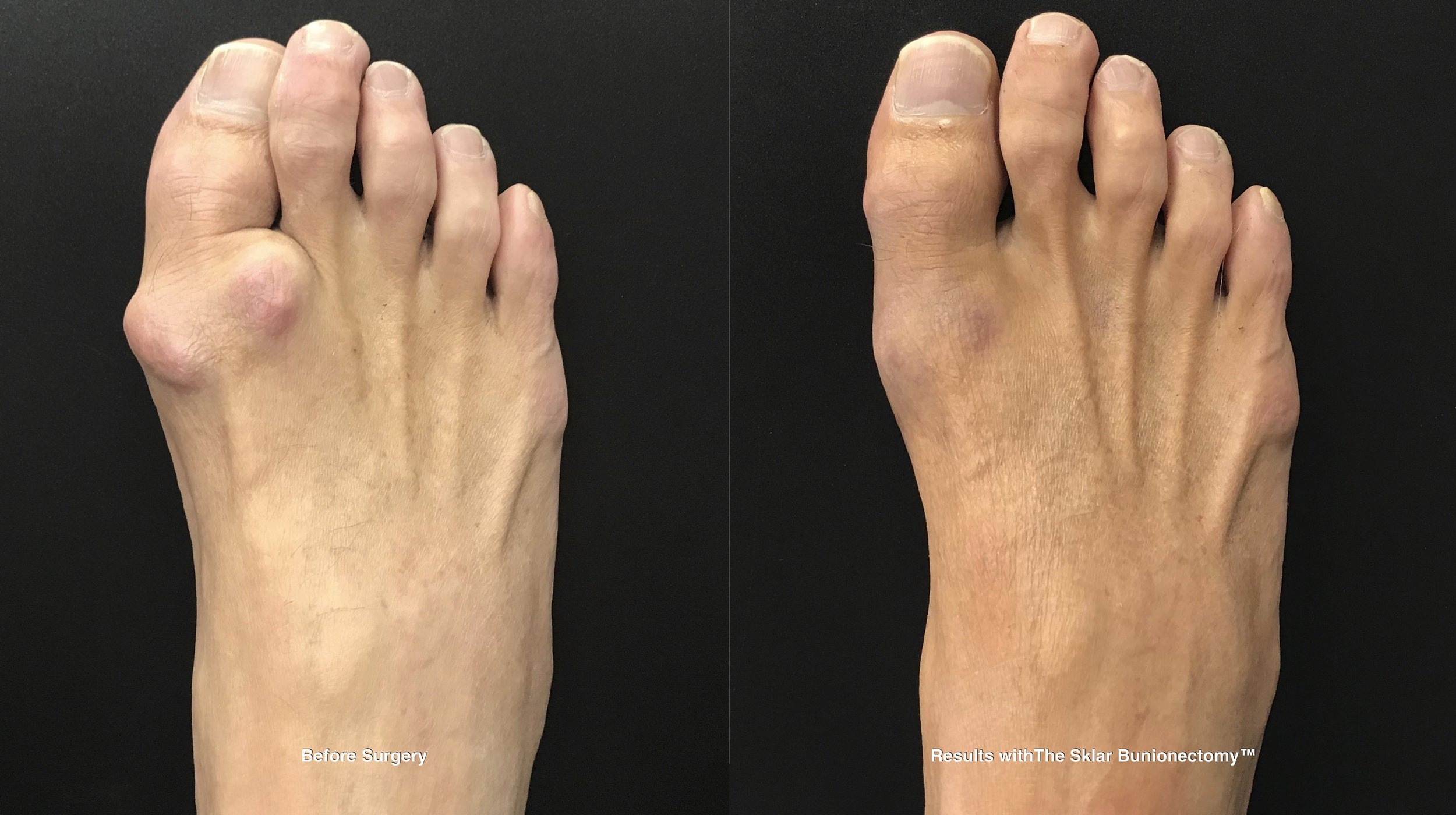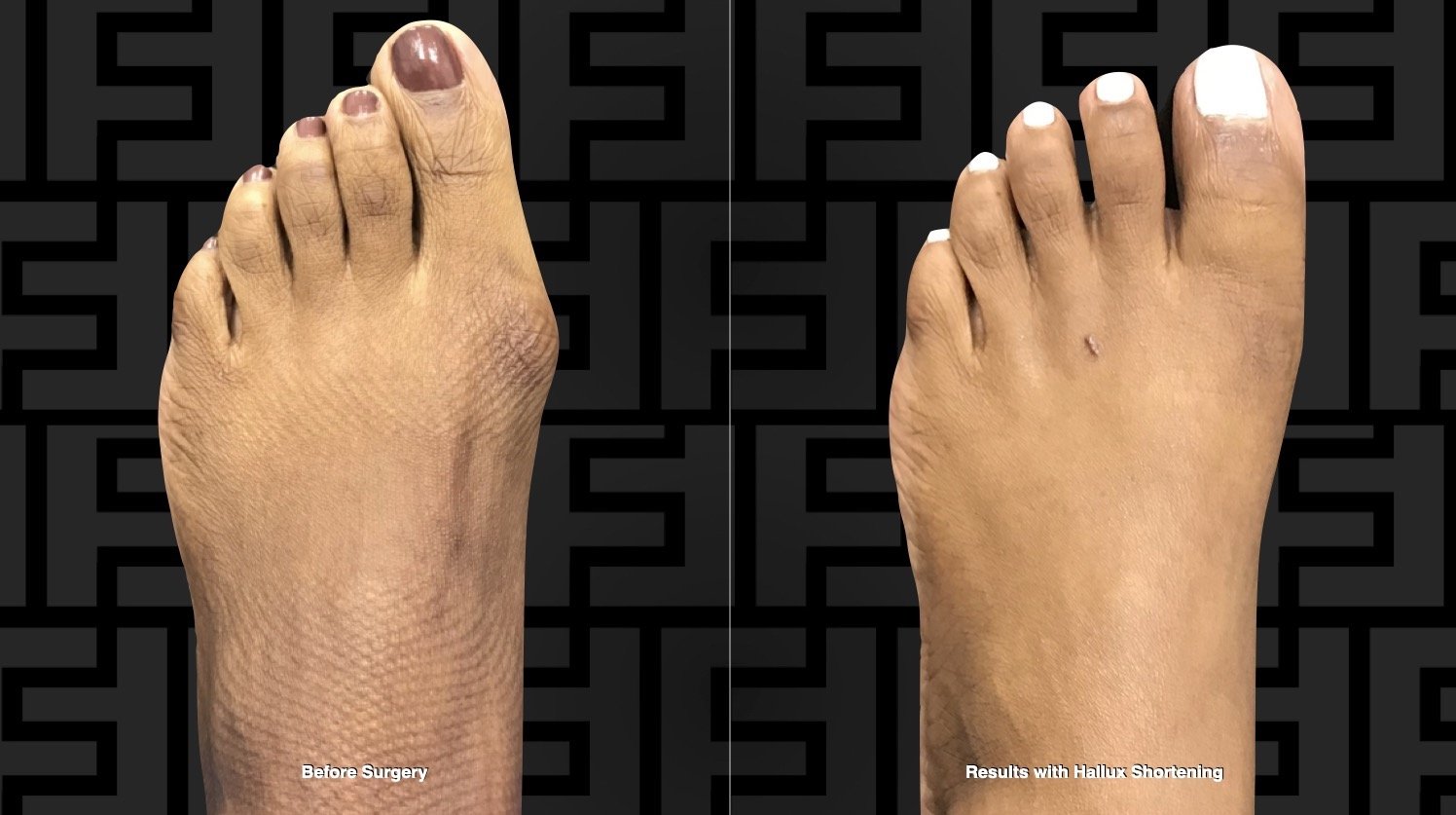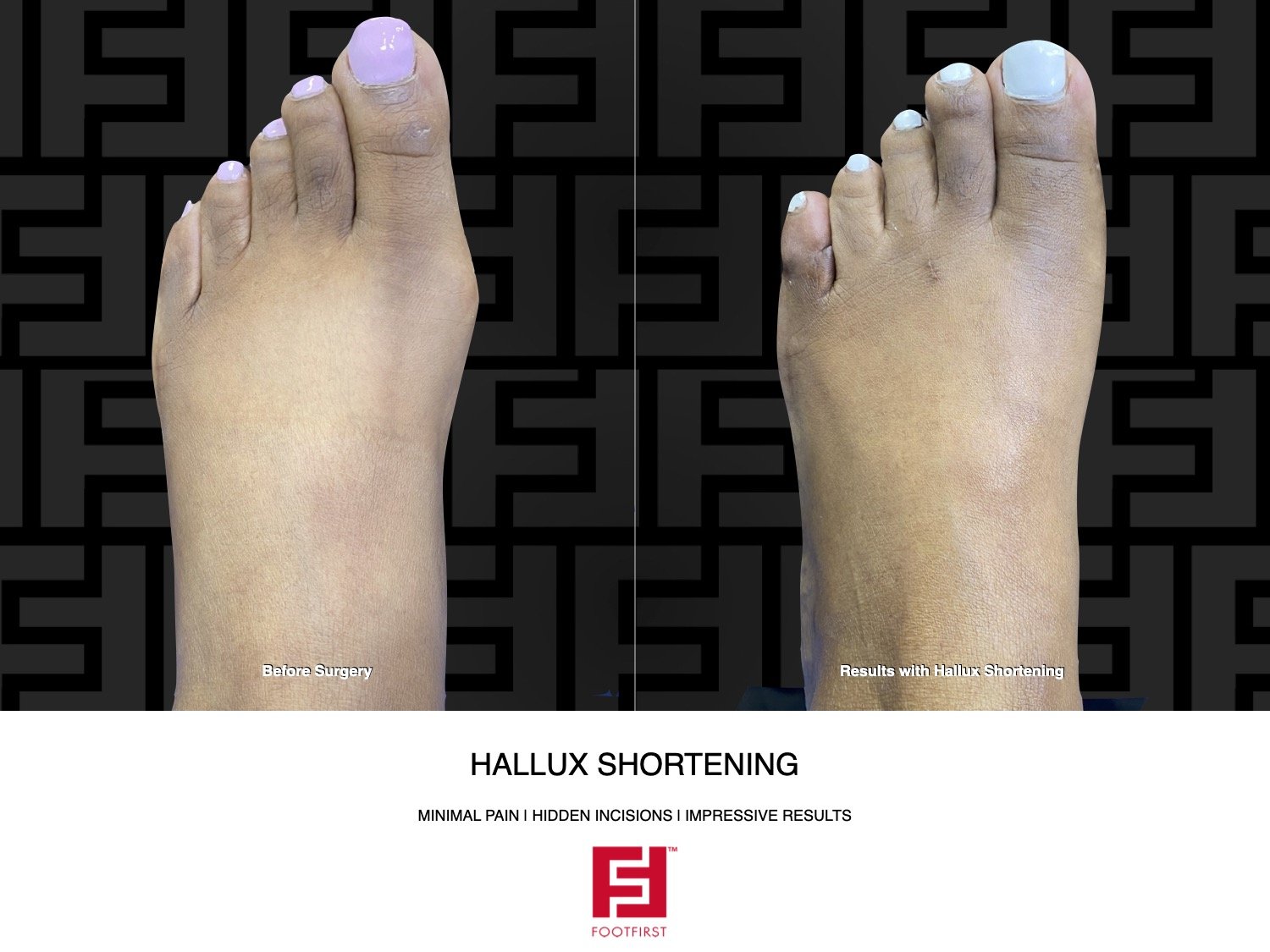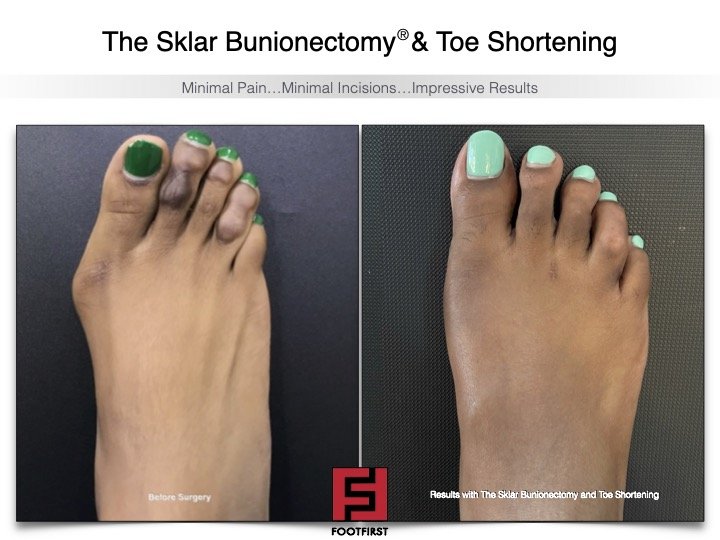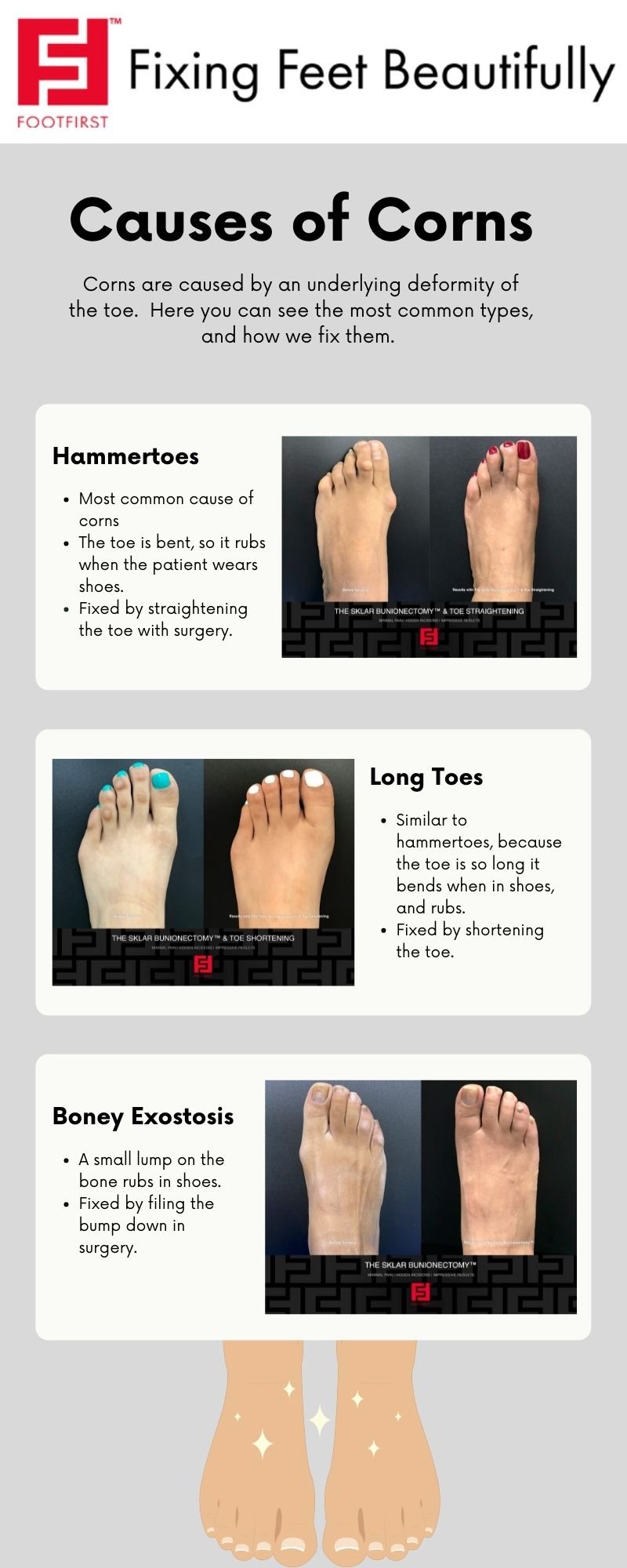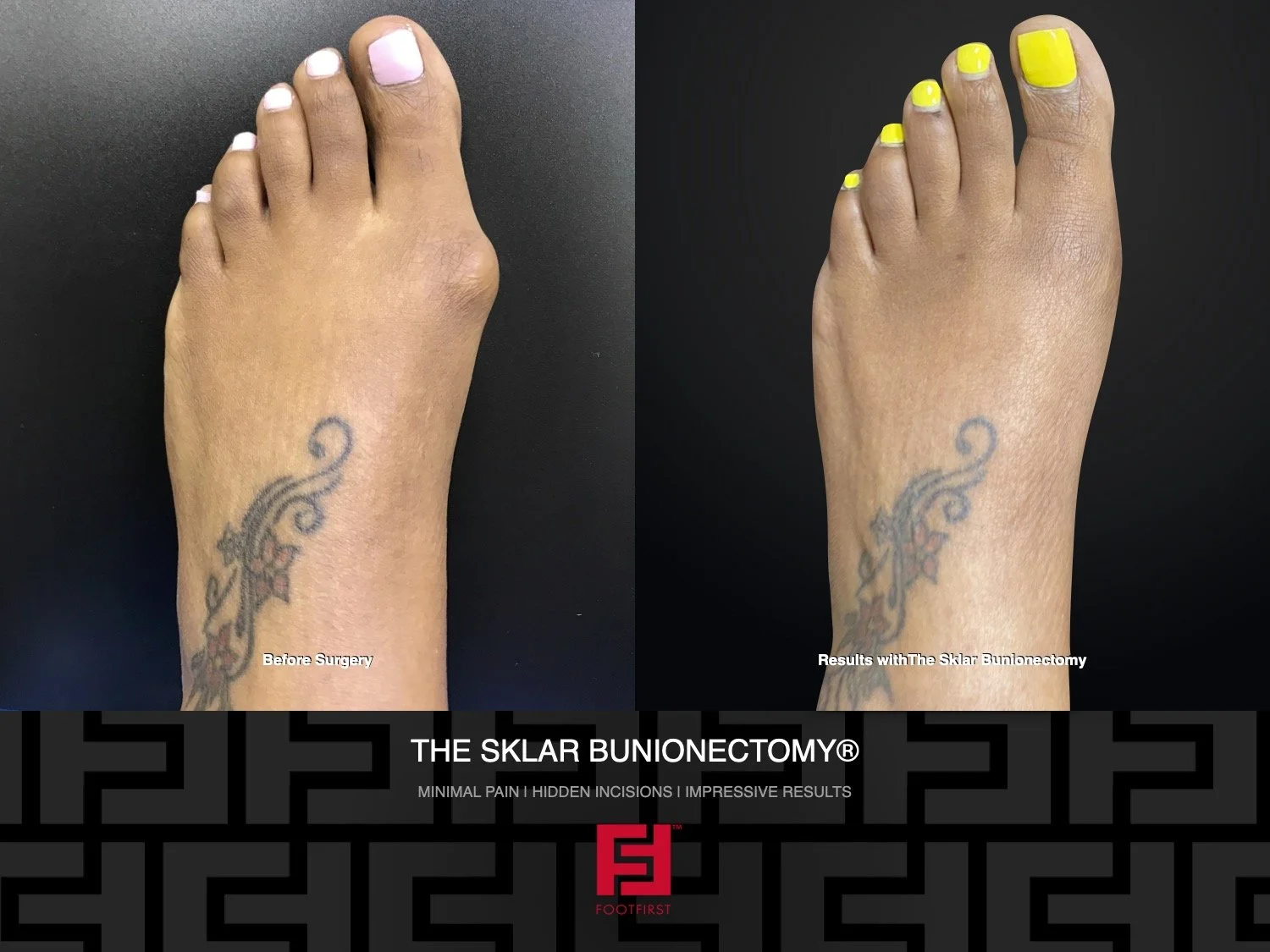Many patients opt for surgeries like the Sklar bunionectomy and toe shortening, as well as treatments for toenail fungus during the winter in order to showcase their beautiful results in their cute sandals come summertime!
What is toe shortening surgery?
Toe shortening is a transformative procedure for patients who tell us about how embarrassed they are to wear open-toe shoes, get pedicures or to just go barefoot in front of others. At Foot First Podiatry, we surgically shorten and straighten their toes, we hide all of our incisions to give patients a cosmetically pleasing outcome and the confidence to show off their feet!
Toe Shortening | www.footfirst.com
What about the fungal nail procedure, what is that?
Patients also come in because of embarrassing thick and discolored fungal toenails that have failed home remedies and over the counter medications. They are still in search of a solution for this stubborn infection. At Foot First Podiatry, we treat fungus aggressively not only with topical and oral medication, but also with our fungal laser to provide impressive results ready for sandal season and pedicures.
When should I start seeing results?
Optimal results take 6 months to a year for all of the mentioned procedures, which makes winter time the perfect season to schedule your appointment and get your feet fixed beautifully by the doctors at Foot First.
If you would like a consultation regarding any of these issues, please use the contact us form on our website or give the office a call at 847-352-9221.





